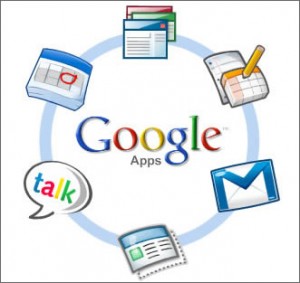GASMO Click-to-Run Installation Fails
Google Apps Microsoft Outlook Sync on a Microsoft Outlook 2013 Click-to-Run install may produce an error. Here's the solution.
Installation of Google Apps Sync for Microsoft Outlook against a machine running Microsoft Office 2013 Click-to-Run may produce the following error message following install:
"This Google Apps sync operation has failed. Please re-try after re-installing Microsoft Outlook (R) or contact you system administrator." [sic]
Aside from the apparent lack of attention to grammar, the problem is related to the pathing environment variable on the machine. Modify the path variable for your Windows computer, using these values; I recommend you put these at the front of the path variable:
For Windows 32-bit with Office 32-bit:
C:\Program Files\Microsoft Office 15\root\vfs\ProgramFilesCommonX86\Microsoft Shared\OFFICE15;"C:\Program Files\Google\Google Apps Sync\profileeditor.exe"
For Windows 64-bit with Office 32-bit:
C:\Program Files\Microsoft Office 15\root\vfs\ProgramFilesCommonX86\Microsoft Shared\OFFICE15;"C:\Program Files (x86)\Google\Google Apps Sync\profileeditor.exe"
For Windows 64-bit with Office 64-bit:
C:\Program Files\Microsoft Office 15\root\vfs\ProgramFilesCommonX64\Microsoft Shared\OFFICE15; "C:\Program Files\Google\Google Apps Sync\profileeditor.exe"
When you launch the Google Apps Setup Sync User, it'll now create a profile.
Buggy, eh?
R
No More PST Files
PST files are used to store email, contacts, calendars, and other data in Outlook. They are sensitive files and likely to become corrupt. Thankfully, with Google Apps, we no longer rely on PST files to manage our data.
Microsoft Outlook uses a database format called a PST file.
The PST file has been around for a very long time. Decades, in fact.
As users receive email in Outlook, the size of their PST files grow. The larger it grows, the greater likelihood the PST file can become unstable and the data within it corrupted.
PST files also have maximum size limitations of around 10-12 gigabytes.
Repairing a corrupted PST file is no laughing matter. It can take hours, and data loss is permanent. Imagine being told that all of your email for the last four years are simply inaccessible and gone. Not a good conversation.
These conditions forced users of Microsoft Outlook to create multiple PST files to manage their data and spread the risk between PST files.
This week, I migrated company that relied on multiple PST files to manage their data to Google Apps. In Google, every user starts with 30gb of storage space and suffers none of the same limitations. This allowed me to consolidate a user with 4 PST's, for example, into just one mailbox. This simplified things for the end-user and made it possible to see all of their folders anywhere they go.
Anyway, as a tech professional, it makes me happy to ditch using PST files and extending capability to users where they've been limited in the past.
R
5 Reasons Why You Need Google Apps for Your Small Business
There are a lot of reasons why you'd want Google Apps for your small business, but here are five strategic persuasive arguments. Sure, Apps is technically cool, but these conditions are where the real value of Apps will come from.
 Why Google Apps?
1. Risk Transfer. There are a lot of risks inherent in managing email: viruses, spam, loss of confidentiality, database integrity, and service uptime ... just to name a few. The risk for managing email is transferred to Google. In theory, Google is better at managing services than you.
Why Google Apps?
1. Risk Transfer. There are a lot of risks inherent in managing email: viruses, spam, loss of confidentiality, database integrity, and service uptime ... just to name a few. The risk for managing email is transferred to Google. In theory, Google is better at managing services than you.
2. Disaster Recovery. Along with managing a service like email comes the burden of managing backups for disaster recovery. Again, Google takes care of all of that. Google is better than you at managing data and recovering from loss. If a PC gets lost or destroyed, we just access Apps to get our data back. Nothing's ever lost.
3. Scaled Investment. You buy and pay for what you need under a subscription-based model. Under an ownership model like owning your own server, you purchase an asset that can deliver a maximum capacity, and you pay for that excess capacity both up-front in an acquisition cost and through the life of the asset in maintenance cost. Shouldn't you only pay for what you need?
4. Email Everywhere. Under Google Apps, your inbox (its folders, email, contacts, calendars, tasks - everything you see in Microsoft Outlook) is available to you on every device everywhere. If it's sent from your phone, it's in your Sent Items on your PC; if you filed it under a folder called Rocky, the Rocky folder is available on your tablet computer. There's no distinction for when and where you receive stuff.
5. Ubiquity. Finally, one of the best features that I like about Apps, is that it can be used on any device and in any combination of software. Mac, PC, Linux; Droid or iOS; tablets, laptops, or PC's. If you're a Microsoft Outlook fan or just like the ease of accessing email under a web browser like Chrome, the service accommodates. It's flexible enough to fit with any end-user preference.
These are some strategic reasons why you want Google Apps for your small business. There's plenty of technical reasons but really - this is the kind of capability you want out of an information service. Why mess around with owning capability when you can lease it, and shift the risk to a player like Google who can manage this stuff much better than you?
R


